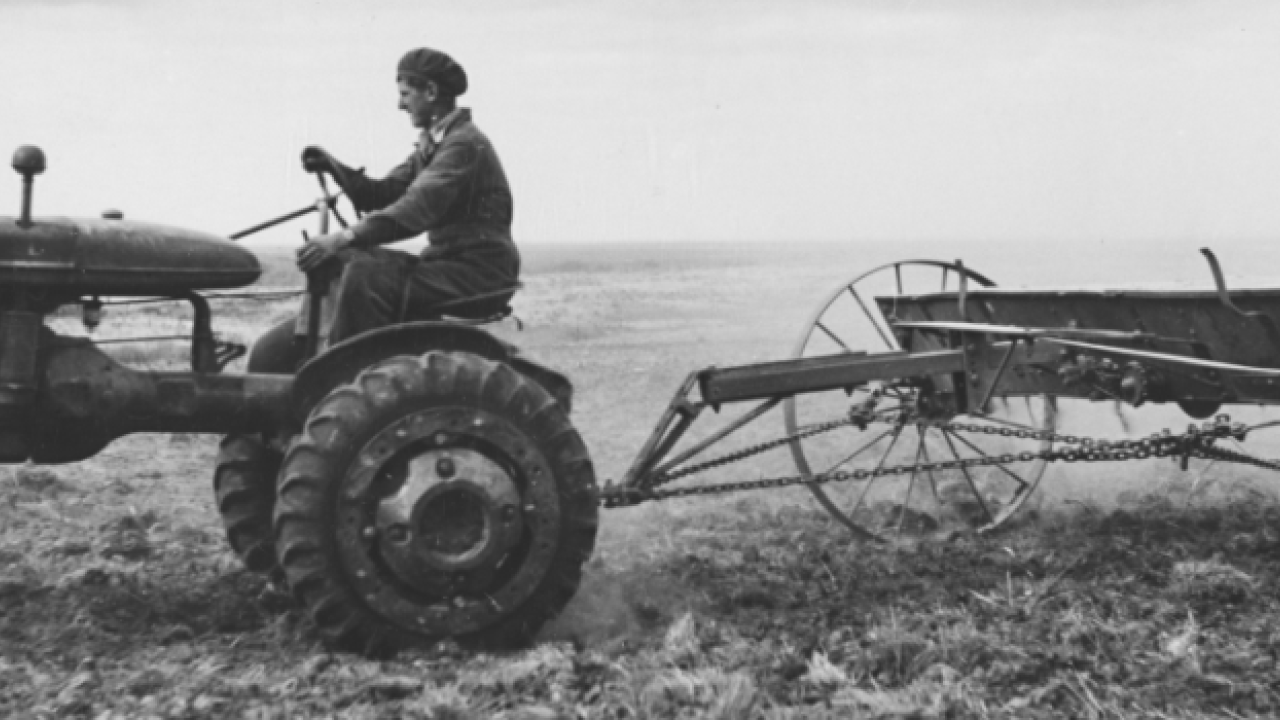The Jim Osborne memoirs - Postpone the lambing, there’s a road to build

My job (as supervisor for War Service Land Settlement for Northern Tasmania) initially consisted of dividing the existing properties from surveyor maps provided to me, arranging the necessary subdivision fences and then providing the necessary fencing to divide each “block” into sufficient paddocks for each new tenant.
On some “blocks” there was a great deal of clearing to be done – some was almost forest, in other parts large areas of gorse – draining where required, and then ploughing, cultivating, and laying down 150 acres of pasture on each new farm.
Eleven miles of new road to suit the new homes was done by what was then known as the PWD (Public Works Department) and the new house sites had to be established. Rabbits were a pest – but they had to come well down on the priorities.
Also, there were 12,000 sheep – 6000 of them ewes, to be cared for, which would later be allocated. In the meantime, they were owned by the Agricultural Bank, the ewes mated to Border Leicester rams. The two wool clips and one crop of lambs were sold for the Agricultural Bank and the proceeds went towards the costs of development.
For most of these jobs contractors were employed – 10 shillings a chain for fencing and rates were arranged for ploughing, cultivating and drilling.
At one stage 98 men were working in various jobs – where possible the waiting settlers were employed working on their own blocks, by contract, but using a large staff for a short time was no more expensive than using less men for a long time and ensured that settlers were settled as quickly as possible.
The logistics of checking all areas and fence lines, supplying the materials for fencing, the seed and fertilisers for pastures and caring for the livestock was fairly hectic – but the jobs were completed in 18 months and the blocks handed over to the new tenants on March 5, 1949.
I was married four days later, on March 9, and so had a new home for my bride, Gill Bailey. But one with no garden, or garden fence, no telephone, no electricity, and no outbuilding. Tools and saddles shared the laundry. The car stayed out in the weather. Improvements would come later.
The Agricultural Bank was obviously not staffed by agricultural people and I still have one letter I received from the then manager.
When the new road was being built there was a suitable gravel supply almost in the centre of where the new road would go.
The PWD had no respect for fences or gates. They cut all existing fences from one end of the new road to the other. As this was in the spring, when 5000 ewes were just about to begin lambing, I asked that they do from the gravel pit to one end before starting the other section, so we could run the ewes undisturbed and at least know where they were.
This meant writing to the manager of the Agricultural Bank – and his reply was a beauty. “Suggest you postpone lambing for three months.”
I could only reply that he apparently had no conception of the problem!
Jim Osborne died in 2012, aged 93, but his family only recently discovered his diary. Extracts are reproduced here with their permission.




Add new comment